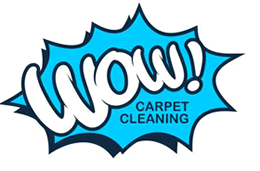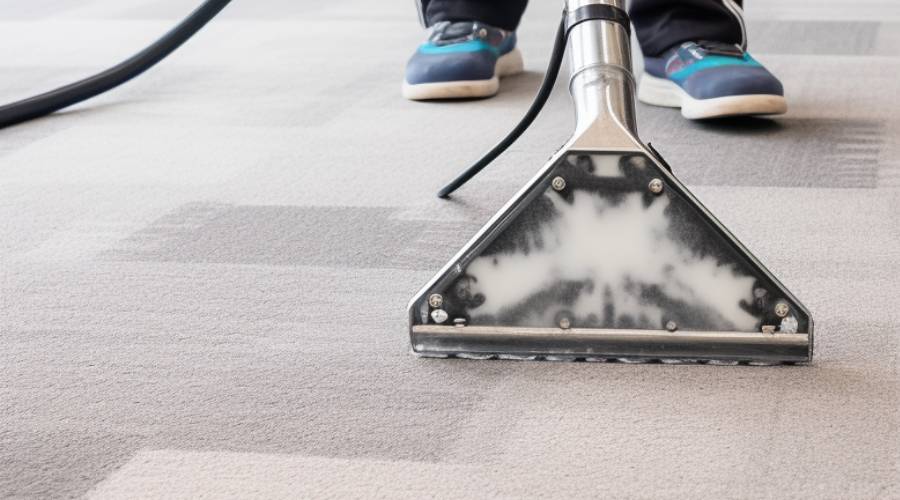Which Method of Cleaning Carpets Should You Consider
Explore Different Ways to Clean Carpets
Think about it: your carpets are like giant filters for your home. They trap all sorts of dirt, dust mites, allergens, and even bacteria. Over time, these things can build up and make your floors look dingy and feel gross. Plus, if you have kids, pets, or both, your carpeting is probably taking a beating daily. That’s why it’s so important to choose the right way to clean at home. But which carpet cleaning method should you consider? Don’t worry. This guide breaks them down for you.
1. Hot Water Extraction (Steam Cleaning)
This is probably the most well-known method to clean carpeting, and for good reason. Here’s how it works:
- A cleaning solution is sprayed onto the floor cover.
- Hot water is injected into the carpet fibres to dissolve the dirt and grime.
- A powerful vacuum extracts the water, along with all the gunk.
Pros:
- Deep clean action that removes allergens and bacteria
- Recommended by many carpet manufacturers
- Can make your flooring look and feel like new again
Cons:
- Longer drying time (usually around 4-6 hours)
- If not done properly, can lead to oversaturation and mold growth
2. Dry Carpet Cleaning
As the name suggests, this method uses minimal moisture:
- A dry compound (usually in powder form) is spread over the carpet.
- A motorised brush works the compound into the fibres, absorbing dust and grime.
- The compound is then sucked out, taking all pollutants with it.
Pros:
- Dries fast (usually around 1-2 hours)
- Convenient for commercial settings where downtime needs to be minimised
Cons:
- Not as effective for a deep clean
- The powder can trigger allergies in some people
- May leave chemical residue
3. DIY Carpet Cleaning
If you’re feeling particularly handy (or just want to save some money), you might be considering cleaning your carpeted floors yourself. Here’s what you need to know about the DIY process:
Pros:
- Can be more affordable than hiring a professional
- Allows you to clean on your schedule
- Gives you a sense of satisfaction for a job well done
Cons:
- Requires time and effort on your part
- Some stubborn stains will require more work
- You may not have access to professional-grade equipment and carpet cleaners
- If not done properly, you could end up damaging your floor cover or leaving it too wet, which can lead to mould growth
If you do decide to go the DIY route, here are a few tips to keep in mind:
- Always vacuum thoroughly beforehand to remove as much dirt and debris as possible.
- Use a carpet cleaning solution that is appropriate for your fabric type and follow the instructions carefully.
- Don’t oversaturate with water or product. Drying will take longer and there’s a potential for mould growth.
- Make sure your carpeted floors are completely dry before walking on them or replacing furniture.
4. Other Methods to Consider
What is encapsulation cleaning?
Encapsulation is a newer technology that uses synthetic detergents:
- The detergent is applied to the carpet, where it surrounds and “encapsulates” dirty particles.
- As the detergent dries, it crystallizes, making it easy to suction up.
Pros:
- Low moisture means fast drying time
- Effective for maintenance between thorough cleanings
Cons:
- Not as thorough as hot water extraction
- May require more frequent deep cleanings
What is bonnet cleaning?
This is most commonly used in commercial settings, like hotels and office buildings:
- A cleaner is sprayed onto the floor.
- A motorised bonnet (a round pad) is used to absorb loose grime and product applied.
- The bonnet is rinsed or replaced frequently to avoid spreading irritants around.
Pros:
- Dries faster
- Effective for high-traffic areas that need frequent care
Cons:
- Only clean the surface
- May not effectively sanitise or remove deep-down dirt and grime
What is carpet shampooing?
Shampooing is similar to steam extraction, but with a few key differences:
- Application of carpet shampoo.
- A motorised brush works the product into the fibres.
- Vacuum extracts the shampoo.
Pros:
- Effective at removing surface dirt and grime
- Can make your carpets look brighter and smell fresher
Cons:
- Not as effective for a thorough clean
- Can leave a sticky residue that attracts more staining and soiling
Factors to Consider When Choosing a Carpet Cleaning Method
Now that you know the ways to clean floors (including DIY), how do you choose the right one for your home? Here are a few factors to consider:
| Factor | Description |
|---|---|
| Types of carpet and material | Some fabrics are more delicate than others and may require a gentler approach. |
| Level of soiling | If your carpets are heavily soiled, you may need a more intensive method like steam cleaners. |
| Desired level of cleaning | Are you looking for a deep clean or just maintenance? |
| Drying time | If you need your floors to dry quickly, a low-moisture method like dry cleaning may be best. |
| Budget | Some techniques are more expensive than others, so consider your budget when making your decision. |
Are Cleaning Chemicals Safe?
You might be wondering about the safety of the chemicals used. The good news is that most professional carpet cleaning services use compounds that are safe for your family and pets.
If you have specific concerns (such as allergies or sensitivities), it’s always a good idea to ask your carpet expert about the products they use. Many companies now offer eco-friendly or non-toxic products for those who prefer them. If you’re going the DIY route, be sure to read the labels and follow the instructions carefully. Avoid using harsh chemicals or mixing different products, as this can create dangerous fumes or damage your carpets.
How to Extend the Life of Your Carpet
While regular cleaning is essential for maintenance, there are a few other things you can do in between servicing:
- Vacuum regularly: Frequent vacuuming at least once a week (or more in high-traffic areas). This can help remove dirt and debris before it has a chance to settle deep into the fibres.
- Use doormats: Place them at all entrances to help trap outdoor pollutants.
- Clean up spills immediately: Blot spills as they happen to prevent staining and damage to the fibres.
- Protect high-traffic areas: Use area rugs or runners to prevent excessive wear and tear.
- Have your carpets professionally cleaned: While DIY can be effective, have your carpets professionally cleaned once or twice a year. This can help remove deep-down dirt and grime that your surface cleaner can’t reach.
The Bottom Line
At the end of the day, the best carpet cleaning method for your home will depend on your specific needs and preferences. But we highly recommend steam extraction for most homes. It’s the most thorough method of reducing allergens. It can make your carpeted floors look and feel like new again. Of course, if you’re up for the challenge and want to save some money, the DIY route is always an option. Just make sure you do your research and follow best practices to avoid damaging your carpets or leaving them too wet. If you’d rather leave it to the pros, that’s understandable too. Professional cleaners will have the equipment and expertise to get your floors looking their best, without the hassle of doing it yourself.

